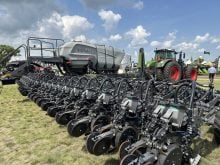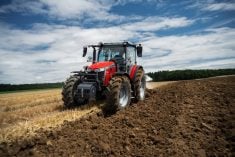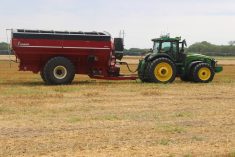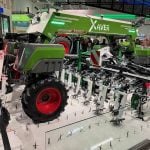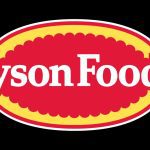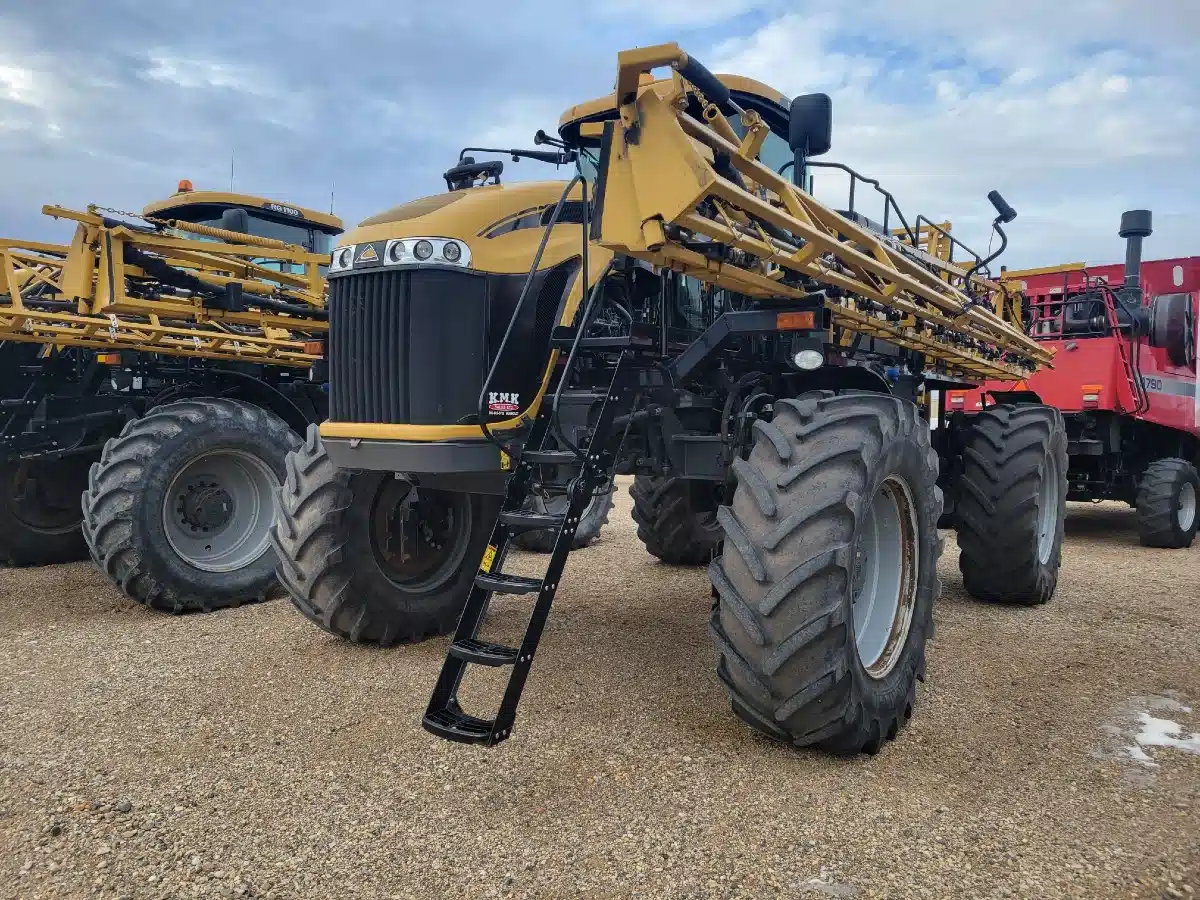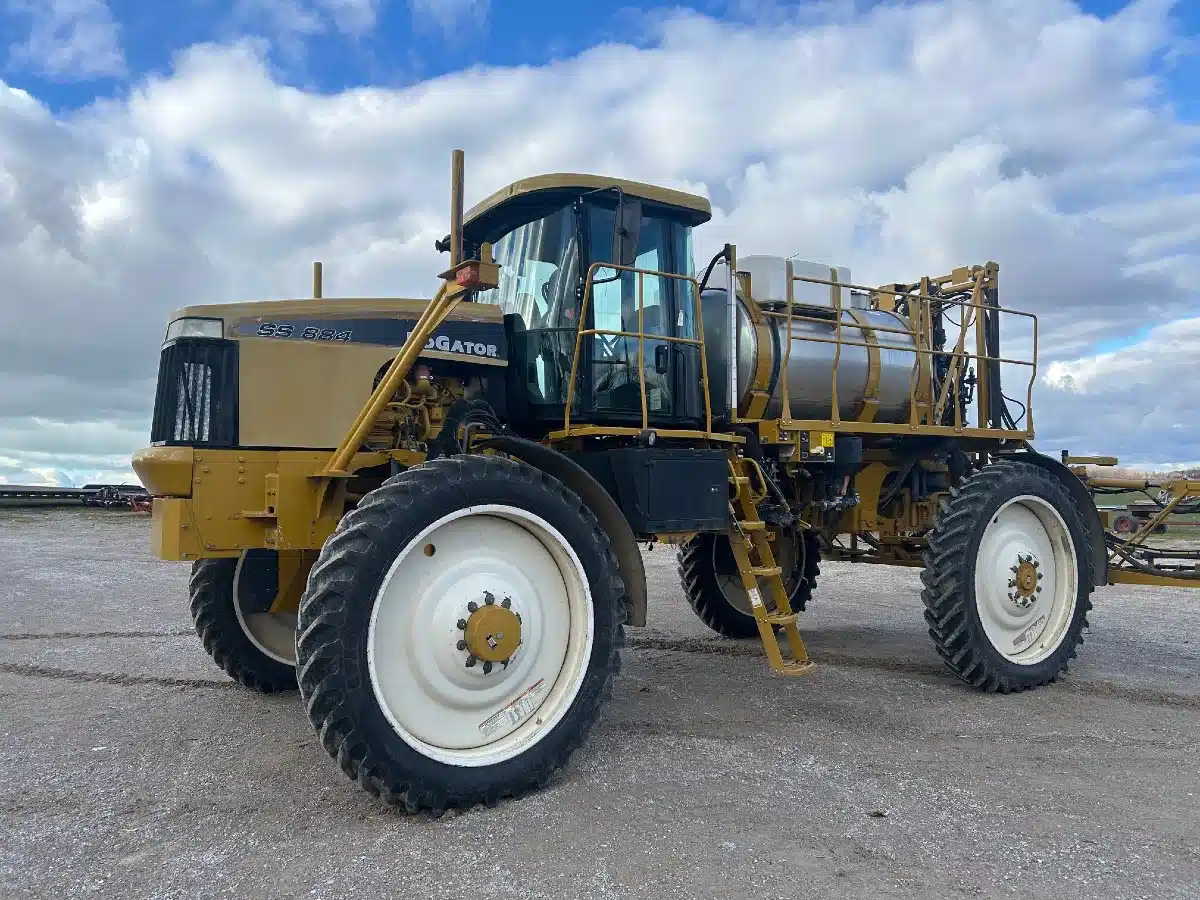Longtime farmers will easily recognize the familiar yellow Rogator sprayers that have worked North American fields over the past few decades, but that eye-catching bright colour on their sheet metal has changed, as has the brand name they wear on their flanks. Parent company AGCO has transferred these sprayers over to its Fendt line of equipment. That’s in keeping with AGCO’s long-term strategy of making Fendt a global, full-line brand, representing the most efficient and technologically advanced machines the company has to offer.
Read Also
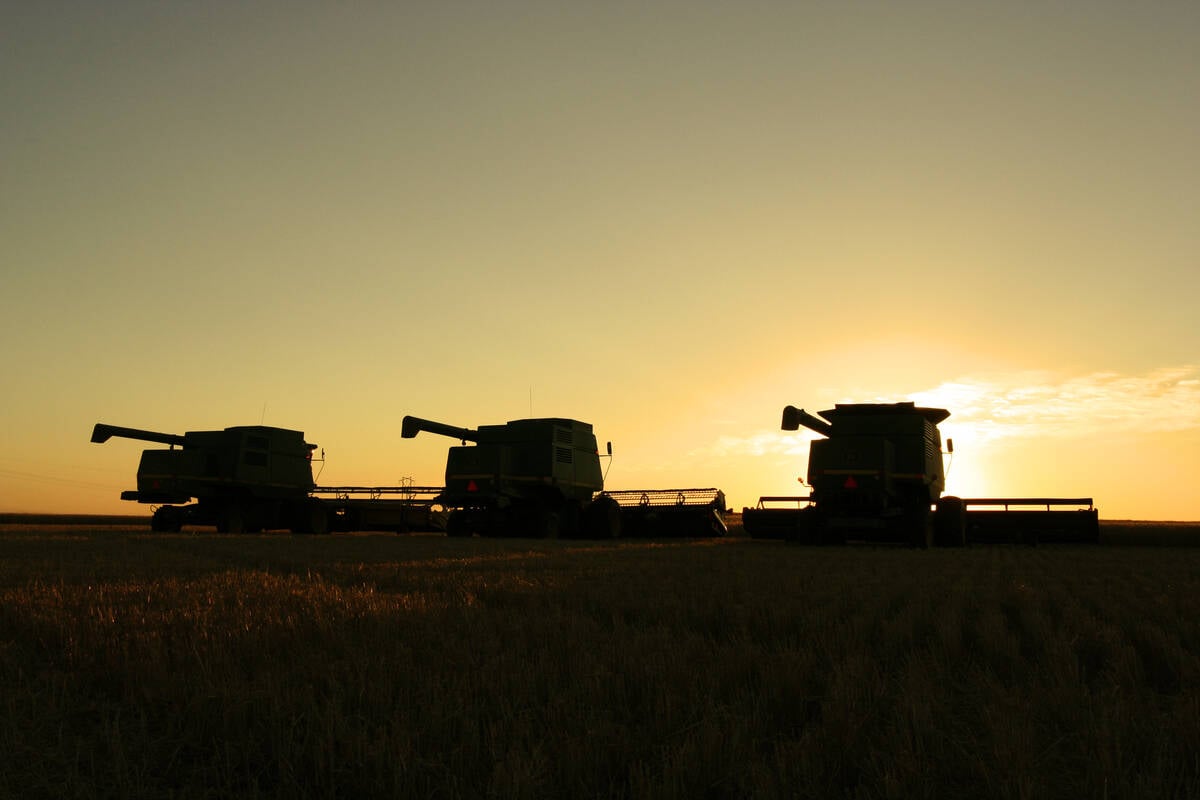
BASF donates seed, inputs to community growing projects
Growers or retailers interested in nominating a community project for the Fields of Purpose program in 2026 can contact their local BASF representative.
The Rogators, which are now the Fendt Rogator 900 series, will continue to be built in their traditional home in Jackson, Minn. AGCO has expanded that facility significantly and for several years has been building tractors there along with sprayers. It originally acquired the facility with the takeover of the Rogator and Terragator lines.
RELATED: Fendt Rogator 900 Series Applicator Specs
Over the past couple of decades, AGCO has been slowly consolidating the equipment it builds into a new, reduced stable of product brands.

“As AGCO has migrated to two brands in North America, we have Fendt and Massey Ferguson as the two major brands going forward,” says Joe Dimler, future crop care solutions manager at AGCO. “We’ll actually be working to make sprayers and other products across the platform feel more like a Fendt all the time in the cab.”
Giving all machines in the expanded Fendt brand offering a consistent feel includes ensuring they have those high-end capabilities that appeal to large-scale producers.
“So, there are projects underway to start to commonize some of the joysticks,” he continues. “The FendtOne user experience has been out on tractors for a few years, and it won’t be long and we should have that type of technology in the cab of a Rogator.”
The earliest and most noticeable changes will be on the joystick and control layout in the cabs.

“(There will be changes to) the button layouts,” he adds. “We tried to bake in some quick shortcuts and add some functionality. We’re trying to make the technology feel as integrated into the machine as possible and remove that ‘bolted on’ feel.”
Fendt Rogator 900 series models, however, continue to use the Raven digital systems owners have long become used to in Rogators.
“Machine management, product management, guidance, that’s all run off of our Fendt Viper 4 Plus system,” says David Fickel, senior marketing manager for application equipment at AGCO. “Everything feeds into that. There are quite a few different systems. For data management you can transfer that digitally. That’s Slingshot 2.0. These are Raven products. We’ve been with Raven for a very long time.
“Another system you can option into is what we call our OptiPulse, that’s a PWM system from Raven. They call it their Hawkeye system. For us, that’s a pulse width modulation kit. That system allows you to do turn compensation.”
Technology upgrades
In addition, the 900s have seen some technology upgrades recently to improve existing systems, such as boom height control.
“Another product we have is OptiHeight, our boom management system,” Fickel adds. “That system allows the boom to react pretty quickly. That product has had some updates in the last couple of years, now it’s radar based. So, it’s much, much faster. It can go a lot higher and still stay pretty accurate.
“We have our standard OptiStop nozzle, which is an on-off ball valve. It gives you section control from the factory for 36 sections. You can also option up to a PWM system, which gives you nozzle-by-nozzle control.”
There is also the OptiLoad feature, which is part of the LiquidLogic system. It allows for customizable and fully automated system rinsing control from the cab, via the Fendt VarioTerminal.
And there are also a couple of additional guidance systems available to enhance GPS accuracy in difficult crop conditions.
“Raven calls it VXN,” says Fickel. “That is your camera guidance. You actually have a dual HD camera set up on the side of the machine looking down at the row of crop. Depending on the canopy stage or where the crop’s at, that will actually drive for you.
“One of the systems we’re working on is the use of radar sensors on the wheel legs. They triangulate and based on that they know where to steer. We’re looking forward to that in the coming months. That’s really only for very tall crops.”
Spot spray capability
But there’s no doubt the cutting edge of industry sprayer technology now is spot spray capability. While there isn’t yet a Fendt 900 commercially available with either green-on-brown or green-on-green systems, the company expects to offer it soon. AGCO has partnered with Bosch-BASF as it develops its One Smart Spray system.
“We actually invested in Greeneye Technologies (a spot spray technology startup company) a few years ago,” says Dimler. “But the only targeted spray co-operation we have right now is with One Smart Spray or Bosch-BASF. We signed our agreement to work with Bosch-BASF right before the end of 2022. So, we’ll be working to integrate that solution on the machine.”
The company is expecting to launch it on a limited basis next year.
“We’re pricing machines right now,” Dimler continues. “So, we’re looking for the first customers to take units. We’re still hopeful we can do some (spot) spraying next fall — the fall of 2024. Our first major run would be for the spring of 2025.”
Like John Deere’s See and Spray Ultimate, which is already commercially available, the initial focus of engineers was to get the Bosch-BASF system to work in the main U.S. crops — corn and soybean. Small grains and specialty crop functionality will follow.
“We have a broad approach,” says Dimler. “We’re very focused on corn and soybeans, but we’re hoping to build the versatility in so that the technology should work very well going out west and into small grains as well.”
The current generation of 900 series sprayers was under development for several years before it was introduced to the market in the fall of 2021, according to Fickel. And the company wanted it to have the broadest appeal to a range of growers and their needs.
“With this new machine, we started development of this back in 2016,” he says. “We were two generations prior at that time. We hadn’t even come out with our C series. It was the B series we were still producing. We said what type of machine can we have on the market that can handle any crop condition and any type of product, any time of the year.”

And that any-product-at-any-time-of-year philosophy has become a major feature of the newest generation 900 series models. They can handle different application bodies on the same chassis, and the design allows for reasonably quick on-farm changeovers.
“Our tagline has really been any season, all season, any product, any system, one machine,” Fickel says. “We’re pretty proud of that fact. We did design that (multi-body feature) into the machine. On the previous generation machines, you could change systems, but it was very time consuming, eight hours, maybe more. So, we built this machine with that in mind. They can switch those systems if they order a combo machine. They can actually change liquid to dry or vice versa. It (now) takes about two hours. That was a big feature for the Rogators — to be able to swap those systems in a timely fashion.”
Liquid and dry product application
The sprayers can be equipped with a standard liquid spray tank and boom, as well as a spinner or air boom system for dry product application.
“It’s essentially unhooking some electrical and hydraulic lines, unbolting it from the chassis, then with some type of lift system you can take that off. You look at the capital investment of these machines and think, well, I need to have more use cases to work that note down. If I buy another system, I can keep that machine running.
“On the dry product side, we have spinners, with the New Leader boxes on there in various configurations. We also offer our own in-house AirMax precision, which is a spinner with an air boom system on it. It’s blowing product out the booms and placing it right on the ground, so it’s a lot more precise placement of product.”
And that ability to change between liquid and dry systems seems to be impressing producers.

“We see that our numbers are starting to come back up with combos on our Fendt 900,” adds Dimler. “We’re starting to see that number climb. There’s starting to be more systems than chassis on order. We’re starting to see retailers and growers want to take advantage of that machine.
“We’re really the only manufacturer left building airflow systems that fit on our own machine, our chassis. We don’t believe in the bolt-on strategy there. We’re still very focused on investing in those systems for the future. We’ve actually started to launch and build an actual combo stand that would help a guy if he wanted his own stand on the farm.
“We have a very strong airflow road map with a couple of on-going projects, so you’ll see some exciting things come forward with that over the next couple of years for both Rogator and Terragator.”
And when it comes to spec’ing out a sprayer, Fendt offers buyers the ability to customize the machine to exactly fit a farm’s needs.
“Depending on what the customer wants, that’s what they can order,” says Fickel. “It used to be we were pretty set with our tank sizes and horsepower. If you wanted the big tank, you got the big horsepower machine. The Fendt Rogator gave us a chance to customize that a little bit. We wanted to put the control back in the customer’s hands. So they can order what they want.
“Essentially, you have three base models, the 932, 934 and 937. The 900 is the series, the last two numbers are the horsepower, so 230, 340 and 370. The 934H and 937H have adjustable height clearance. You really have five models in total.

“With some exceptions you can put any tank you want on that machine chassis. You could put a 1,300-gallon tank on the smallest horsepower machine. Boom width, same thing. If you’re on flat ground and don’t need a lot of horsepower, you could get a smaller horsepower machine with a big boom system.
“You have boom width from 90 up to 132 (feet). Some of those larger booms are aluminum, you can get that as an option. When you look at tank sizes, we offer a 900, 1,100 and 1,300. We also do offer a 1,600-gallon tank for certain customers who want the ultimate in productivity. That’s kind of a factory special, so you’d have to check with your dealer on that.
“There’s a lot of customization there.”




